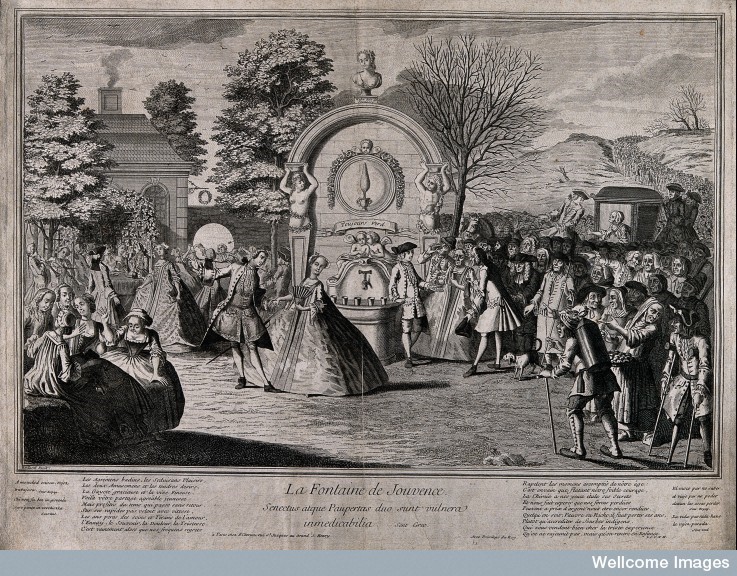
Guest Post by Rachel Winchcombe
In early modern Europe life expectancy was low. A male property owner living in fifteenth-century England would not expect to live past his thirty third birthday, whilst life expectancy in eighteenth-century Paris could be as low as twenty four.1 In this environment of early death, illness and disease was rife. Unsurprisingly early modern Europeans took a great interest in their health and developed a range of theories and cures to help their ailing bodies. With the onset of the Age of Discovery in the late fifteenth century, the idea of finding cures and treatments for European illnesses abroad became more entrenched. In the lands of the new world of America, in particular, a potent mix of myth, legend and exoticism combined to make this region a prime hunting ground for curative products. From the Fountain of Youth, to the Tree of Life, to the invigorating properties of tobacco, America became a medicinal environment ripe for European exploitation.
The Fountain of Youth
Water, as the archetypal symbol of life, has been attributed with curative powers by numerous cultures for centuries. Alexander the Great, for example, was purported to have found a font that would make the drinker immortal, whilst the medieval writer, Sir John Mandeville, also claimed to have found a Fountain of Youth on an island named Lomba.2 In the early modern period the Alexander romances and Mandeville’s travels were extremely popular and well-known tales, going through multiple editions in print in various European vernaculars.3 Armed with these fantastical stories, European conquistadors transported the legend of the Fountain of Youth across the Atlantic to America.
In many early accounts of America the natives’ apparent longevity is something that is often noted. Amerigo Vespucci, after whom the newly discovered continent of America was famously named, described the native peoples he had come across. According to Vespucci they lived for ‘150 years’ and were ‘rarely sick’.4 The Dutch merchant, Jan Huyghen van Linschoten, agreed, claiming that the Tupinambá of Brazil lived to the ripe old age of 120 and were ‘healthsomer’ and ‘lesse subject unto sicknes’ than Europeans.5 Conflating the perceived longevity of the natives with the story of the Fountain of Youth, some explorers became convinced that America was the location of the fabled fountain. Arguably the most famous searcher of these waters of immortality was Juan Ponce de León, a conquistador who had apparently been told by a Taino chief of a fountain, located on the island of Bimini, which was able to restore one’s youth. Returning to Spain to receive his title of Adelantado of the islands of Florida and Bimini, the legend of this miraculous American spring quickly circulated. Ponce de León, however, was mortally wounded by an Indian arrow in Florida before he could find the mythical fountain.6 Although some remained convinced of the veracity of Ponce de León’s story, the idea of an American Fountain of Youth eventually lost its potency.
Despite our apparent modern-day rationalism, the idea of products that can somehow slow down the ageing process remains attractive. Whether it be the various creams that promise to rid us of wrinkles, or the ongoing research that claims that injecting young blood could be the key to fighting age related illnesses such as dementia, the lure of perpetual youth and increased longevity still has the power to fascinate and tantalise.7

The Tree of Life
Other ideas about the curative power of the American environment, however, were more tangible. Case in point, the discovery of the somewhat hyperbolically named ‘tree of life’. In Canada, during the winter of 1535 to 1536, a cruel and unknown disease swept through the ranks of French explorers and the native Iroquois. In a desperate attempt to identify the disease, an autopsy was performed on a member of the crew who had succumbed to the illness. His body was ripped open; inside his lungs were ‘blacke and mortified’ and ‘rotten bloud’ surrounded his heart. Despite these gruesome discoveries, the French explorers were none the wiser, becoming so ‘greeved with that sicknesse’ that they ‘lost all hope ever to see France agayne’. Just when all hope looked to be lost a cure was found. Having seen a native man, whom previously had been riddled with the illness, now seemingly cured, the French explorers asked how this was possible. The man responded by saying that he had taken the juice and sap of the leaves of a certain tree, claiming it to be the only remedy. After taking the sap for themselves the afflicted Frenchmen found themselves ‘delyvered of that sickenesse’. Not only did this natural medicine appear to cure this unknown disease, it also seemed to have a curative effect on other diseases, most notably the French Pox (syphilis). Jacques Cartier, the leader of the expedition, was so impressed with the results that he even claimed that ‘if all the Phisitions of Mountpelier, and of Louaine, hadde beene there wyth all the drugges of Alexandria, they woulde not have done so muche in one yeare, as that tree dydde in sixe dayes’. 8

Plant physiologist, Don Durzan, through a consideration of the symptoms described by Cartier, has identified this unknown disease as scurvy and the tree as the eastern white cedar. Durzan suggests that the sap of this tree contains arginine, essential amino acids, and biofactors in decoctions, all of which contributed to the restoration of health after a bout of scurvy. The sap from trees such as this would continue to be used as a cure for scurvy by sailors throughout the early modern period. 9
Tobacco
Undoubtedly the most medically commoditised product to make its way to Europe from America was tobacco. The medical myths surrounding this product would endure for centuries. In the early decades of European exploration of the Americas the attitude towards tobacco was one of ambivalence. On the one hand the use of the herb was associated with the profane, devilish rituals of Amerindian religion, and yet on the other there was a growing belief that tobacco had significant medicinal potential.10 With the publication of Nicholas Monardes’s medical history of the west, a more positive description of tobacco and its uses became steadily entrenched.
Monardes claimed that tobacco could cure a number of health problems. It could cure a headache, toothache, random bodily swellings, numerous ailments of the stomach, and could alleviate rheumatism, kidney stones, bad breath and chilblains.11 In 1595, the English pamphleteer Anthony Chute agreed with this positive assessment, claiming that ‘there is nothing that harmes a man inwardly from his girdle upward but may be taken away with a moderate use of tobacco’.12 American tobacco thus influenced early modern medicine, being prescribed for a number of ailments due to its apparent excellent restorative properties and establishing medical myths that would go unchallenged for centuries. As this advertisement from the 1930s attests, even in the twentieth century tobacco was still seen as a medicinal product used to maintain and bolster good health.
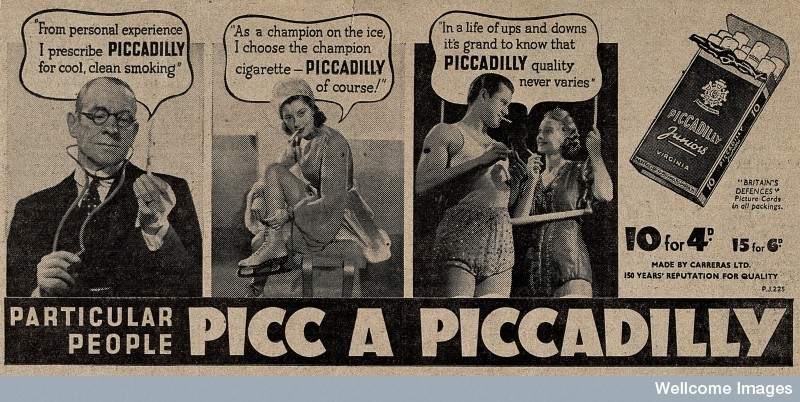
What this European search for cures in America shows us is that in the early modern period new geographical discoveries were met with a large degree of optimism. For early modern Europeans these previously untapped lands were not only the gateway to riches, but also, potentially, to cures and treatments that would rid Europe of disease, illness, and early death.
Rachel Winchcombe is a final year history PhD student at the University of Manchester. She is an Arts and Humanities Research Council funded candidate and a University of Manchester President’s Doctoral Scholar. Her research interests include European cultural encounters with the Americas, and the development of early English colonial ideology. In particular, her doctoral research focuses on representations of America in sixteenth-century English print, tracing the changes that took place in representations across the sixteenth century and the influence that this century of creating and consuming varied portrayals of America had on English colonialism in the seventeenth century.
____________________________
1 Aaron Antonovsky, ‘Social Class, Life Expectancy and Overall Mortality’, The Milbank Memorial Fund Quarterly, 45.2 part one (April, 1967), 32.
2 Jorge Magasich-Airola and Jean-Marc de Beer, America Magica: When Renaissance Europe Though it had Conquered Paradise, second edition, trans. Monica Sandor (London, 2007), 44-46.
3 John Andrew Boyle, ‘The Alexander Romance in the East and West’, Bulletin Of The John Rylands University Library Of Manchester 60 (1977), 13.
4 Amerigo Vespucci, ‘Letter on his Third Voyage’ in Clements R. Markham (trans. and ed.), The Letters of Amerigo Vespucci and Other Documents Illustrative of his Career (London, 1894), 47.
5 Jan Huyghen van Linschoten, Iohn Huighen van Linschoten. His Discours of Voyages into ye Easte & West Indies (London, 1598), 244.
6 Magasich-Airola and de Beer, America Magica, 48-50.
7 Helen Thomson, ‘Young blood to be used in ultimate rejuvenation trial’, New Scientist, https://www.newscientist.com/article/mg22329831-400-young-blood-to-be-used-in-ultimate-rejuvenation-trial/ (accessed on 9th May 2016).
8 Jacques Cartier, A Shorte and Briefe Narration of the Two Navigations and Discoveries to the Northweast Partes Called Newe Fraunce, trans. John Florio (London, 1580), 65-68.
9 Don J. Durzan, ‘Arginine, Scurvy and Cartier’s “Tree of Life”’, Journal of Ethnobiology and Ethnomedicine, 5.5 (February, 2009), 1-5.
10 Peter C. Mancall, ‘Tales Tobacco Told in Sixteenth Century Europe’, Environmental History, 9.4 (October, 2004), 651-657.
11 Nicholas Monardes, Joyfull Nevves out of the Newe Founde Worlde (London, 1577), 35-37.
12 Anthony Chute, Tabacco (London, 1595), 11-19.

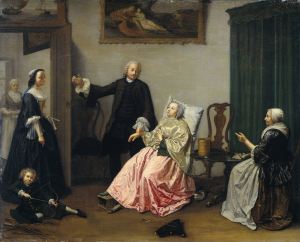
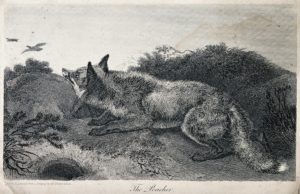

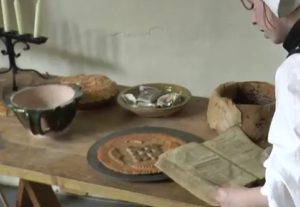
Interesting post! Shared.
Very interesting, thanks.
One point though:
I’m sure this is mathematically correct, giving the average or mean age. However, I’m equally certain that it doesn’t really reflect the reality. In those times, infant and child mortality was very high. Yet if you were lucky enough to reach maturity, it does seem that many people did live to a reasonable age – seventies and beyond. Of course, adults did succumb to infectious diseases, but overall there were reasonable numbers of ‘old’ people.
Thank you for your comment. This of course is very true. In a short blog post though, more the shame, there is not always space to go into these nuances.
Hi there, of course you are entirely correct. I definitely could have been more precise in my language here. Thank you for the feedback!
Tysm, this was so much help for my historical medicines project for Yr.11 😀